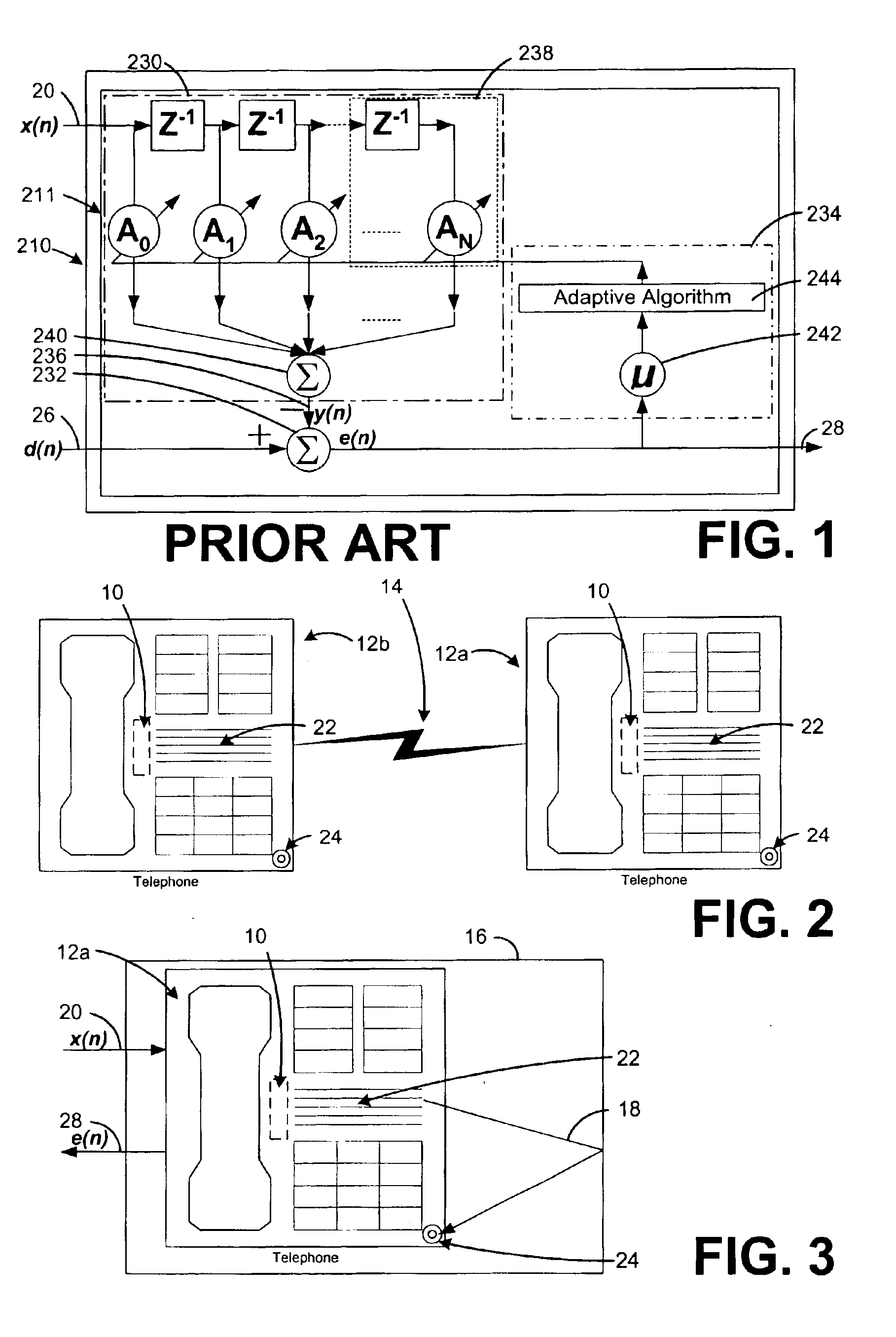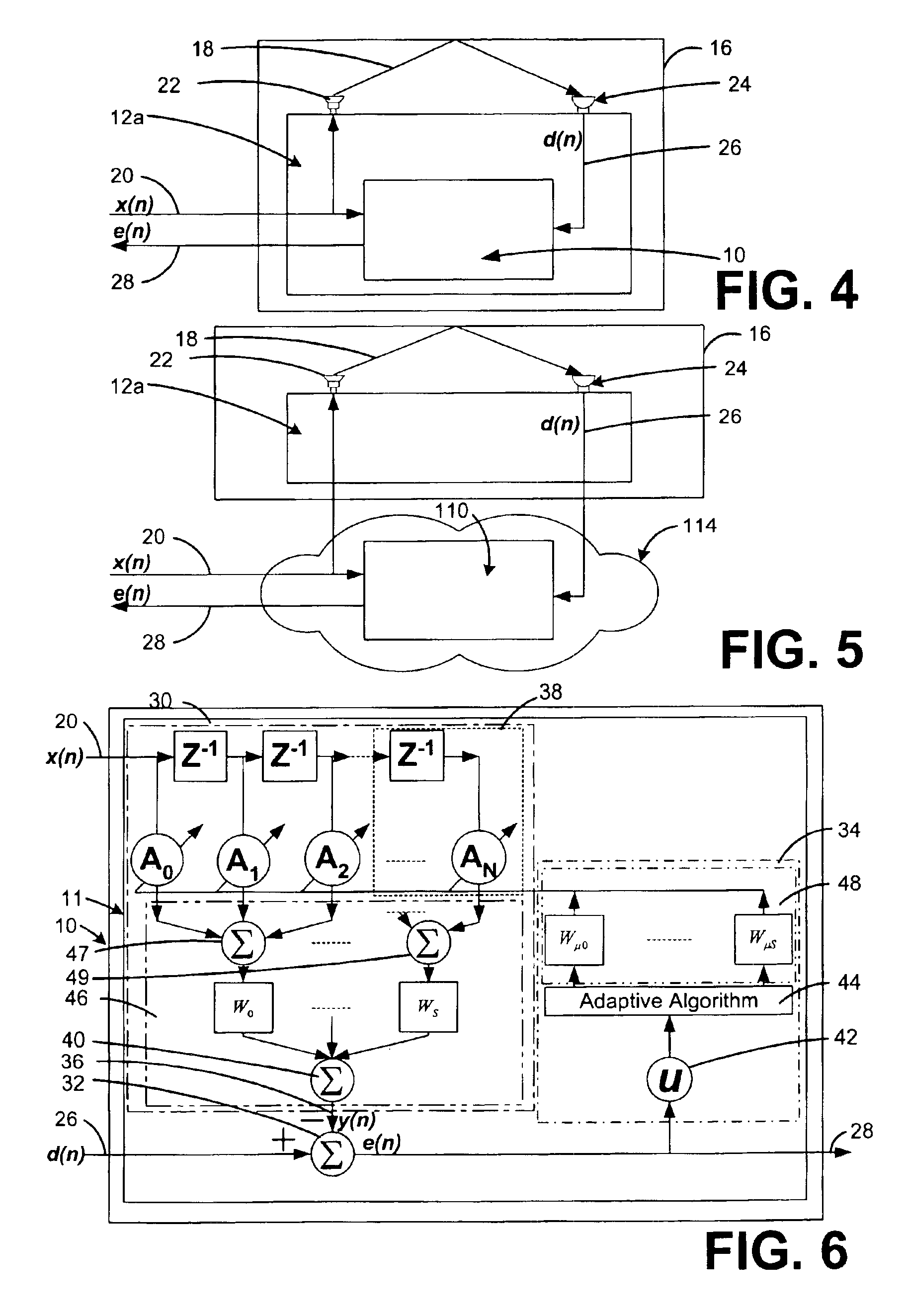Acoustic echo cancellation
- Summary
- Abstract
- Description
- Claims
- Application Information
AI Technical Summary
Benefits of technology
Problems solved by technology
Method used
Image
Examples
Embodiment Construction
[0049]The present invention provides an improved echo cancelling device that is particularly well suited for use in communication networks where an echo occurs as a result of an acoustic feedback taking place at one end of the communication link (acoustical echo).
[0050]FIGS. 2-4 illustrate an exemplary embodiment for an adaptive echo cancelling device 10. In this exemplary embodiment, the adaptive echo cancelling device 10 is located within a telecommunication terminal 12a, for example. The telecommunication terminal 12a may be a plain old telephone (POT), a VoIP (Voice-over Internet Protocol) phone, a cell phone, or the like. The telecommunication terminal 12a is part of a telecommunication network 14. It should be understood by those skilled in the art that the telecommunication network 14 may be a PSTN network, a VoIP network, a wireless network, or the like.
[0051]The telecommunication terminal 12a may be placed in a room 16 (illustrated in FIGS. 2-3) where an acoustical echo pat...
PUM
 Login to View More
Login to View More Abstract
Description
Claims
Application Information
 Login to View More
Login to View More - R&D
- Intellectual Property
- Life Sciences
- Materials
- Tech Scout
- Unparalleled Data Quality
- Higher Quality Content
- 60% Fewer Hallucinations
Browse by: Latest US Patents, China's latest patents, Technical Efficacy Thesaurus, Application Domain, Technology Topic, Popular Technical Reports.
© 2025 PatSnap. All rights reserved.Legal|Privacy policy|Modern Slavery Act Transparency Statement|Sitemap|About US| Contact US: help@patsnap.com



